The world of photography can be a confusing one, especially if you’re only just starting out. Getting your head around some photography terminology, can be like speaking another language! Maybe you don’t know your aperture from your shutter speed, or maybe you’re mixing up your sto-fen and your flash trigger.
If you’re unfamiliar with any photography terms or phrases, this photography encyclopaedia will be a great place to start. Below you’ll find a world of information at your fingertips, so it shouldn’t be long before you’re an expert on all the key words and phrases that people in the photography industry use.
Here’s an encyclopaedia of photography words and terms you’re bound to come across a lot as a photographer or a photographic enthusiast, and afterwards too. Don’t worry – photography terminology can be confusing even to the experts, so it’s always handy to have a list like this to hand just in case.
Hopefully this list can help you in getting to know your equipment, and getting to understand how the camera functions, as well as it’s history.

A Brief History of Digital Photography
Digital photography is currently the most popular form of photography, and it’s not hard to understand why. The immediacy and directness of digital photography makes it appealing to the masses, and the portability (most of us have a digital camera on our mobile phones) makes it easy to try and experiment with on the go.
Digital photography is only a relatively recent development in the history of photography though, and only really became popular and accessible to the public within the last 20 – 25 years. It may seems like everyone has a digital camera at their disposal now, but that’s wasn’t always the way!
Here is a brief history of digital photography, so you can learn a little more about how this amazing technology become part of our everyday lives.
The Introduction of the Scanner
Digital photography is all about the movement of image, and digital processing of images. The scanner (invented in the 1950s) was one of the first inventions to let us copy and send images / visuals electronically. Whilst a scanner didn’t actually take photographs – it certainly was one of the first stepping stones to digital photography.
The Space Race
One of the major driving forces behind developing digital photography was the space race (1950s). It became quite clear early on that film photography wouldn’t work in space – the film rolls wouldn’t be able to be sent back down to Earth – and there wouldn’t be any film processors in space to change the reels either. The solution was digital photographs and using coded images, which could be sent via signal.
The “All Solid State Radiation Imager”
This crucial invention, that received and stored optical images, that was a predecessor to the CCD (charge-coupled device) which was invented in 1969 by Willard Boyle and George E Smith. The technology in both of these inventions helped inspire further invention, and became crucial inspiration for some of the first digital camera models released to the public.
The “Sony Mavica” and the “Canon RC-701”
Widely regarded as the first digital camera in 1981, however it was never available for commercial production. The camera could store around 20-25 images on a floppy disc (ground breaking at the time!). The first commercial analog electronic camera was the Canon RC-701 which was released to the public in 1984.
Digital cameras go mainstream
It took around a 10 years from this point for digital cameras to become the photography tool of choice for most households. Gradually camera brands such as Kodak and Fuji released more affordable models, and people realised the advantages to printing a digital image at home, not to mention the improvement in image quality.
Digital Cameras in Phones
The addition of digital cameras to mobile phones is what cemented digital photography as a ‘keeper’. The ability to carry your camera around in your pocket made photography irresistible to the masses.
Who can resist taking a spontaneous photo, especially when their phone is already in their hand? The growth of social media and photo-sharing websites also increased the popularity of digital photography, as people wanted to share more of their lives than ever before.

A Brief History of Instant Photography
Instant photography has come a long way from the 1940s and whilst instant photography was once the very forefront of photographic practice, it is mostly used today by photography enthusiasts, or as a novelty / nostalgic activity – or as a way of quickly and digitally printing images.
Why do people love instant photography?
It’s so much fun, and you get to see the result in an instant! This was unheard of when photography was first invented – as prints could take weeks to be developed and the process of getting your photograph into a frame was a long one (and often expensive).
On film cameras, you wouldn’t be able to see your photograph instantly like we now can with digital cameras or smart phones. You would look through the viewfinder, trust that the settings were correct, and press the trigger – hoping for the best. You wouldn’t see your developed images until your prints were processed and back from the darkroom.
But instant photography changed all of that – it allowed you to take a photograph and then process it immediately, without a darkroom. It cut the waiting time down hugely – and people loved seeing and sharing their photos minutes after taking them.
The Birth of Polaroid
In the 1940s, Edwin Land, a scientist and inventor, was on holiday taking photos of his daughter. Being a child, she was curious as to why the photographs couldn’t be seen right away – and after thinking about it, Land set out to develop a solution and try and make it possible for her. It was in 1948 when Edwin Land invented the Polaroid Land Model 95 camera – which became the breakthrough of instant photography.
This camera utilised two separate rolls of different charges; positive and negative charges respectively which allowed photographs to be created inside the camera. It made such an impact in the photography industry that all units and film supply sold out on day one.
Development of Edwin’s breakthrough solution continued and in the 1950s, Polaroid’s sales continued to skyrocket.
This led them to producing different camera models and film types. By 1956, Polaroid’s sales had passed the million mark. Then as technology progressed, in 1963 the world’s first ever colour film, polacolor, was created. This development led to the production of an affordable instant camera model which became widely used in the passport photo service.
The polaroid camera became massively popular, and a huge part of culture and photography through the 1970s, 1980s and 1990s. Polaroid photos became an ideal way to capture memories and keep moments. If you look back in scrapbooks you’ll spot polaroids in the centre stage!
Creating a Future with Fujifilm Instax
In 2001, the Polaroid Corporation filed for bankruptcy protection and decided to step out of the market in 2008. Then Fujifilm, a Japanese manufacturer of instant cameras took advantage of the market vacuum. They went ahead to develop two films FP-100c and FP-3000b that are compatible with older polaroid cameras.
Today, thanks to Fujifilm, photographers around the globe can still enjoy instant photography. They offer instant cameras (akin to those originally produced by Polaroid) and they also have devices that produce instant film prints – from digital devices such as smartphones. It keeps the ‘instant photography’ concept alive, and keeps the nostalgia and novelty around instant photography popular and thriving.
Instant photography has indeed come a long way, and if not for Edwin’s daughters question, instant photography might have never come to be.
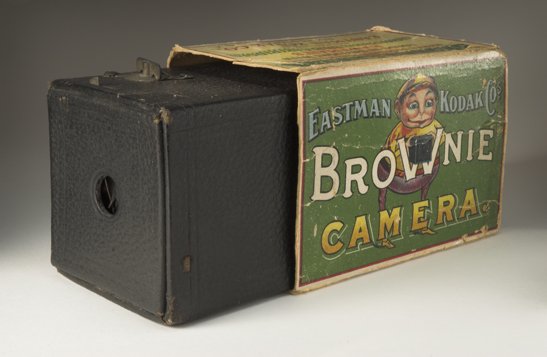
Box Brownie
Photography today is such a big part of our everyday lives. Most people have cameras in their pockets, in the form of their smartphone and because of this, photography has never been more accessible or enjoyable.
The growth of technology throughout the last 100 years has led us to a point in history where we can all have easy access to cameras, and we can all capture photography whenever and wherever we choose to. But it hasn’t always been like this, in fact, when photography was first invented it was very much an activity and privilege for the middle and upper classes. If you didn’t have money – it was unlikely you’d ever get to experience a camera!
That was, until George Eastman.
George Eastman changed the course of photography’s history and journey. He made it accessible and affordable for the millions of people who couldn’t afford the bigger cameras, or couldn’t afford to visit a trained photographer.
What he set in motion with the invention and production of the Box Brownie camera was the democratisation of photography. And overnight, photography went from being something solely reserved for trained professionals – to something available to anyone with a dollar to spare.
It was during February of 1900, that Eastman’s company, Eastman Kodak, brought their point-and-shoot, affordable, hand-held camera to the public’s attention. The camera was unlike anything before it – it was simple to use (simple enough for a child!) and it only cost $1 to purchase. It was the first camera to make photography available to the masses – and remains an iconic and hugely important part of photographic history.
Box Brownie: An instant success
Because of the camera’s simplicity and accessibility, people were excited and eager to try the camera themselves. It was a huge talking point and one of the biggest trends of the time. People were desperate to get their hands on the Kodak “Brownie” camera – and more excited to try taking photographs of their own.
Within the first year, a huge 100,000 of them were purchased by the public – and the camera was hailed as a huge success. More people than ever before were capturing their families, friends and personal moments in photographs, and many photographs surviving today from that time period were captured using the Box Brownie camera.
Why was it called a Box Brownie?
The box part of the name came from the shape and design of the camera – which was quite literally a brown box.
The name also partly came from where the camera was designed and manufactured. This was down to a man called Frank Brownell of Rochester, New York – so perhaps the name was partly in thanks and recognition to him too.
At the time, there was also a popular children’s cartoon of the same name – and the marketing team for the camera thought it would be a smart idea to give the camera a name that communicated fun and childlike characteristics. They wanted to show how simple and easy to use the camera was, and this seemed like a good way to do so.
How did it work?
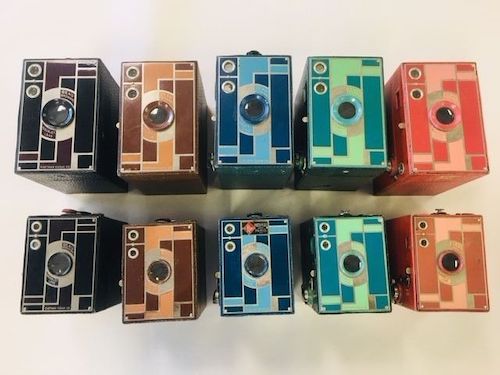
The Brownie camera was quite simply, a rectangular cardboard box, covered in fake-leather with nickel fittings. The device wasn’t designed to be overly sturdy (especially at the $1 price tag).
The camera had a simple meniscus lens, and captured 2 1/4-inch square pictures on a 117m roll film. To take a “snapshot,” all you needed to do was pop in the roll of film, close the Brownie’s door, hold the camera at waist height and turn a switch. There was a little viewfinder on the top for you to look through, to ensure you were capturing the right angle / scene.
Kodak Eastman really wanted to keep the process as simple as possible.
The Cost and Affordability
As we’ve mentioned, Kodak Eastman began selling the Brownie Box camera for only $1. This was amazingly affordable, especially for a camera you could function and use without the help of a trained professional, and without taking lessons or courses to learn how to use it. The price-point is what made the camera a huge success, and for only 15 cents extra, you could also purchase a six-exposure film cartridge to go inside.
Customers could also send their rolls of film into Kodak to process for them, which was revolutionary at the time (and something that later caught on in the 60s, 70s, 80s and 90s) where many retailers offered film processing services.
The processing fee for the Brownie photos were 10 cents a photo, plus 40 cents for developing and postage. Again, this opened up the activity to many people, as they didn’t need to learn how dark rooms worked, or buy expensive equipment or chemicals to develop their photography at home.
Not just for Adults
Because of how easy the entire process was, and how affordable the camera and photo development was, Kodak Eastman knew this was an opportunity to bring a whole new generation into photography.
As we mentioned briefly earlier, they were extremely keen to market the camera towards children. This helped them convince people how easy the device was to use, but it also brought in a fresh audience of young people who would later grow up loyal to the Kodak brand.
Here’s a snippet from a promotion poster for the Brownie camera:
“This is just the camera you ought to have, to get pictures of your games – the places you go this summer – your chum making a boat and the old swimming hole where you sailed it; everywhere there’s fun, there’s a good subject for a picture – perhaps to recall some playmate when you have gone out into the big world and look back upon these good times. Then there is sister – her birthday party on the lawn – at play with the dollies; in these is a story for the Brownie that will always be interesting”
The Box Brownie camera is an iconic and hugely important part of photographic history, and we hope this article has given you a glimpse into why and how it changed photography for the better. Next time you take a quick snapshot on your smartphone, remember the long historical journey required to get to this point!
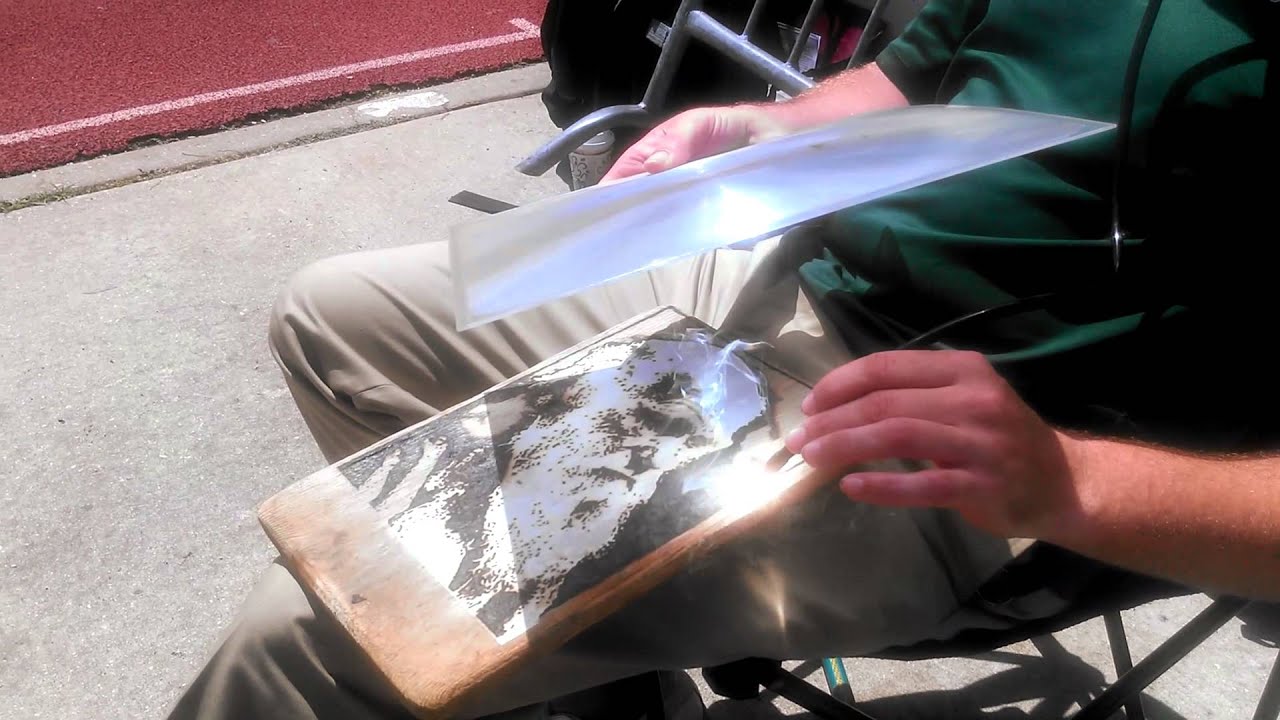
Heliography
The evolution of photography is something that has spanned many years, with input from different inventors, different companies and different techniques. One of the earliest techniques that helped shape the growth of photography, was the photographic process called Heliography.
Who invented Heliography?
Heliography is a photographic process that was invented by Nicéphore Niepce. In some cases – it is still used today (mainly for photo engraving). It was the process of Heliography that created the first and earliest known permanent photograph, taken from a nature scene. Niépce’s famous and iconic photograph “View from the Window at Le Gras” (c. 1826) is what the photograph is called, and is referenced and discussed in many photography books as one of the most important photographs ever taken.
However, It’s interesting to note that many books quote Niépce, claiming his interest in Heliography was primarily because he wanted to improve lithography, which was his lifelong passion.
The process of Heliography
At the time of invention, Heliography was a ground-breaking process. Here’s a rough outline of how the Heliography process took place:
- The naturally occurring asphalt bitumen, is applied as a coating on glass or metal
- This chemical then hardens in relation to the light exposure available
- The plate is then washed with oil of lavender
- After washing with oil, the only area remaining would be the hardened area where the image formed.
In Niépce’s famous photograph “The View from the Window at Le Gras” he recorded having given the image an eight-hour exposure, which gives you an idea of how long this process took.
Where does the word come from?
If we break down the word ‘heliograph’ we can see the Greek origins of the word. Helios (Greek: ἥλιος), means “sun” – which can relate to the light exposure that the process is reliant upon.
The second part of the word, can be drawn back to the word ‘Graphein’ (γράφειν) which means “write”.
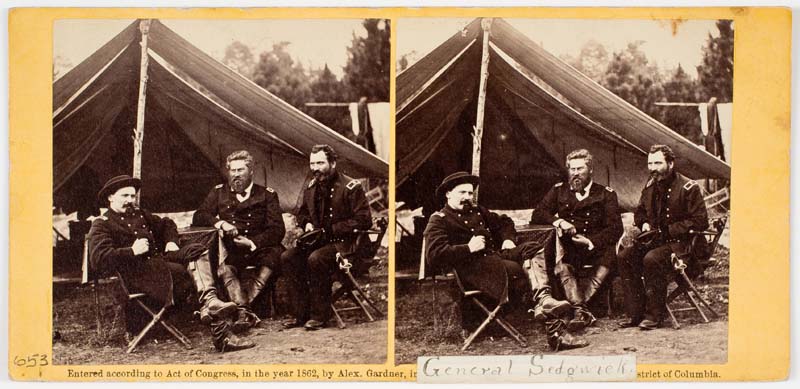
Stereographs
In the evolution and growth of photography as a creative medium, there have been many different types of photography. Some have come and gone, and others have left a lasting impression and even helped shape modern digital trends and practises.
The Stereograph is one of the photographic techniques that altered the way we made and viewed images for years to come. The stereograph (as it’s most popularly known) is also often referred to as the stereopticon, stereogram, or stereo view – and it was one of the forms of photography that emerged shortly after the creation of the polaroid.
What made the Stereograph such an important photographic technique?
In short, the Stereograph was the first kind of 3D photograph. And yes, whilst the process was much simpler, and the output much more basic than the 3D images we enjoy today, Stereography is certainly where the journey of three-dimensional photography began. These stereographs (the term for the images created) had to be viewed using a stereoscope to get the full effect.
In fact, the Stereograph became a major educational tool in the nineteenth century, and a big form of entertainment too. They were often used to report on news and events, and even wars (they played a big role in reporting the Civil War in the USA). The Stereograph captured an environment so convincingly that for many entertainment companies, it became the medium of choice.
There are many nineteenth-century photographers who used this technique to cement their place in the photography hall of fame. Carleton Watkins, Timothy O’Sullivan, and Eadweard Muybridge are amongst those, and have their work regarded as some of the most important early three dimensional photographic experimentations.
How was a Stereograph created?
The process for creating a stereograph looked something like this:
- Two near-identical photos were placed on cardboard side by side next to each other.
- When viewed through a stereoscope, the two chosen images appeared to combine into one photograph.
- The combining of these two images gave them a 3D effect (much like the 3D glasses we wear in cinemas today).
It was completely unique and awe-inspiring for people of the time, and the popularity of stereography grew rapidly because of how authentic and amazing viewers found the effect.
Oliver Wendell Holmes, can be attributed with inventing the affordable stereo viewer and released it to the American market. This made the effects of stereographs more accessible to more people – and helped launch the popularity of the medium.
Where does the word come from?
The word can be broken down into different parts. For example, the word “stereoscopy” originates from Greek language, with ‘stereos’ meaning ‘firm, solid’, and ‘skopeō’, meaning ‘to look, to see’.
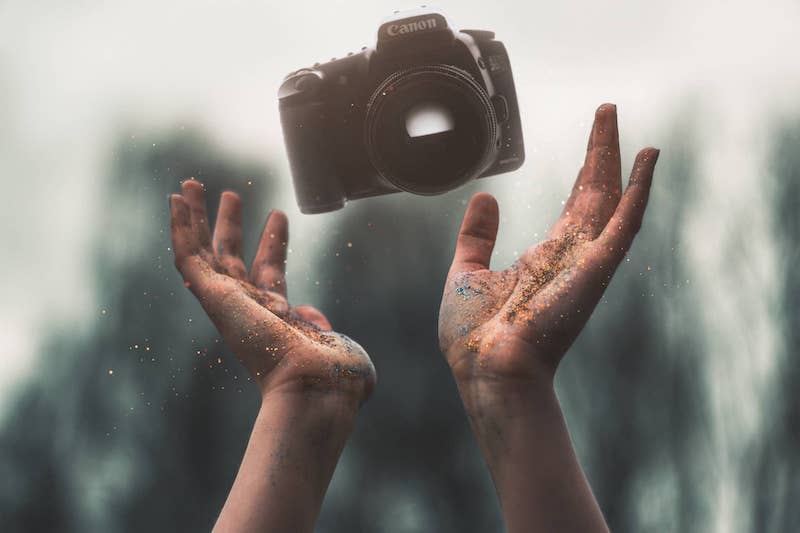
The Evolution of Photography
Photos are a huge part of 21st century life. For many people, their lives are documented in photos, whether that be film photography / instant photography or digital photography. Most of us have photo albums packed full of cherished visual memories, and these photographs play a sentimental part in how we recall and remember our lives.
Most of us in 2019, also carry a camera with us everywhere we go (via our smart phone), and it’s true to say, photography has never been more affordable or more accessible.
But where did the journey begin? What has the evolution of photography looked like throughout time? Keep reading to find out…
Early Photography
The basic concept of photography dates back to the 5th century B.C.E, but it wasn’t until the 11th century when a scientist invented the practice of “camera obscura” that the art of photography was truly born. This device, although hugely impactful in the evolution of photography, couldn’t record images. It’s purpose was to project images onto another surface, where (often) the likeness would then be drawn or painted on top.
The Camera Obscura used a pinhole in a tent to create an image from outside the tent into the darkened area. It was nothing near being portable until the 17th century when basic lenses were added to the device to help focus light rays in the desired direction.
Sounds like a poor development compared to what we have now right? But in truth, this was the breakthrough. If this feat hadn’t been achieved, we probably would have never advanced into today’s culture of photography.
The First Permanent Photographic Images
The first permanent images were created in France by Joseph Nicephore Niepce in the late 1830s. Joseph used a portable Camera Obscura to expose a pewter plate that was coated with bitumen to light. This action recorded the first image in the history of photography that didn’t fade immediately.
Due to his success in creating the first image, myriads of experiments occurred which led to the rapid development of photography as the invention of Daguerreotypes, emulsion plates, and wet plates simultaneously occurred mid-to-late 1800s.
The Widespread use of Cameras
Photography remained an expensive and timely practise for many years – something that was reserved mainly for the wealthy or upper class. Because of the equipment costs and chemical costs (to develop the images) it wasn’t something that ordinary people could partake in or experiment with.
Well, not until George Eastman started up a company in the 1880s called Kodak – ring a bell?
George Eastman invented a flexible roll film that didn’t need its solid plates to be changed frequently. This invention allowed him to create the self-contained box camera that was able to hold approximately 100 film exposures.
Users of this product would record pictures and send back to the factory that they can help develop the films and print the images. They were like modern disposable cameras, but much more complex and a little pricier! But still, the camera was one of the first that made the activity affordable. This affordability broke the jinx of cameras being accessible to only the rich and elites in society.
Photography Becomes a Hobby and Career
Over the following decades, photography changed drastically – and devices became smaller, smarter and cheaper. People of all backgrounds in the 70s 80s and 90s, could go out and buy cameras, whether it was an expensive SLR camera, or a cheap disposable film camera. Local business and pharmacies could even offer film processing, where the wait time was as little as a day for prints.
People starting using photography to mark important occasions in life, such as birthdays, weddings, events and parties – and soon a career in photography was a viable choice for many with a creative eye.
Digital Age of Photography
The next stage, naturally was the introduction of digital photography. Camera companies began to experiment electronically and technically – by replacing traditional systems with digital / electronic alternatives.
This led to a huge influx in digital cameras, which took off immediately. The digital aspect of the camera meant buying film, and paying for processing fees were a thing of the past – so it made photography cheaper still, as people could now print their images from the comfort of their own home.
It also made people take more photos, and capture more moments. Whereas a traditional film camera would likely store around 30 images per roll of film, a digital camera usually stored above 200 (depending on the size of the memory). It meant people could be more candid and creative, as they no longer had to worry about wasting film.
Smartphones
Fast forward to 2019, and we’re all carrying a camera around with us… via our mobile phone. Smartphones were the ultimate photographic evolution – merging a camera with many other crucial day-to-day devices and compacting it into a small, easy to carry size.
Smartphones opened up photography to the masses, and encouraged people who may not ever have used a camera, to experiment with image capture. Photographs were easily uploaded to the internet and social media platforms – and images can now be shared with a network of friends just minutes after you’ve captured it.
It adds an element of excitement to photography, and can connect people from all over the world.
What does the Future hold for Photography?
Here are a few projections:
Virtual reality: It’s already making waves and showing a lot of potential as many industries aim to capture the VR magic with 360 photography. Digital photography has evolved from smartphones into virtual boxes and is still evolving as VR technologies are being released.
Photography Won’t Remain Static: Look at the invention of dynamic photo technologies like Apple Live Photos, DSCO, Instagram’s Boomerang, etc. Photography is shifting from 2D to 3D and it’s promising to be explosive.
A lot of things in life might have stopped evolving but the art of photography is still many years away from total evolution. The goal is to make photographic images as real as the original object taken, and whilst we may be close – there is still so much to be done.
Daily, steps are being taken, progresses are being made and researchers are working non-stop to ensure this goal is achieved. Brace yourself because you haven’t seen the best of photography just yet.
